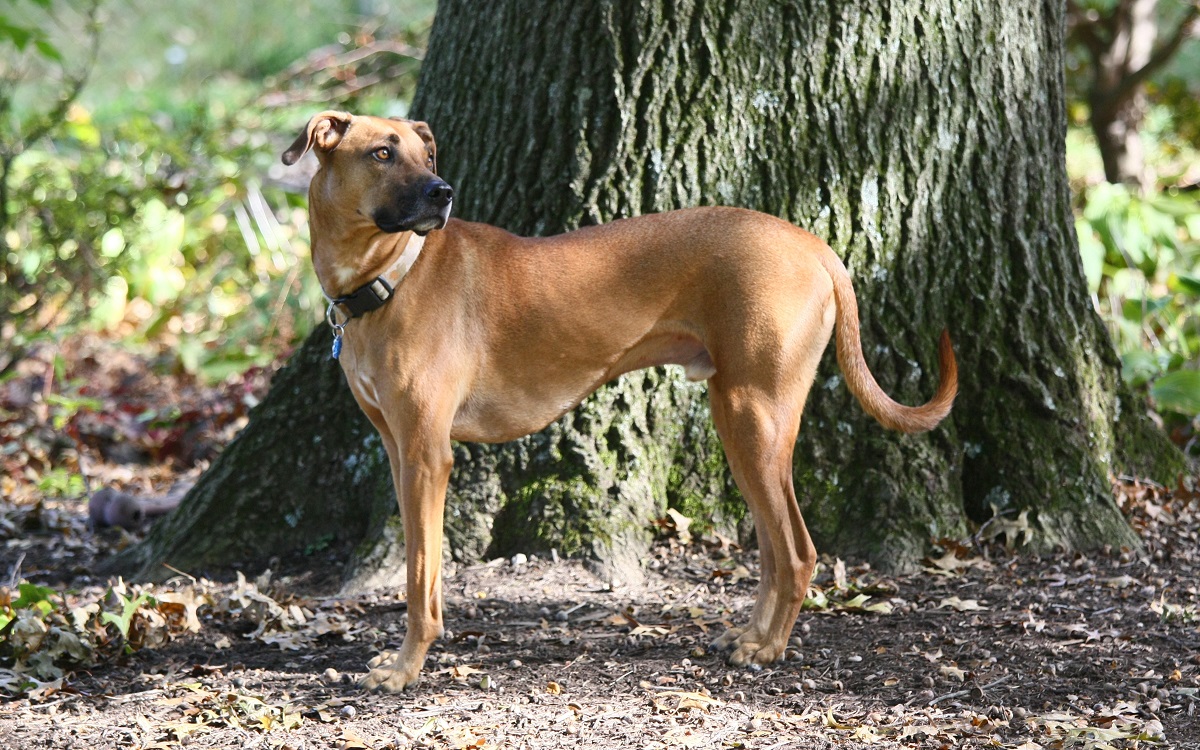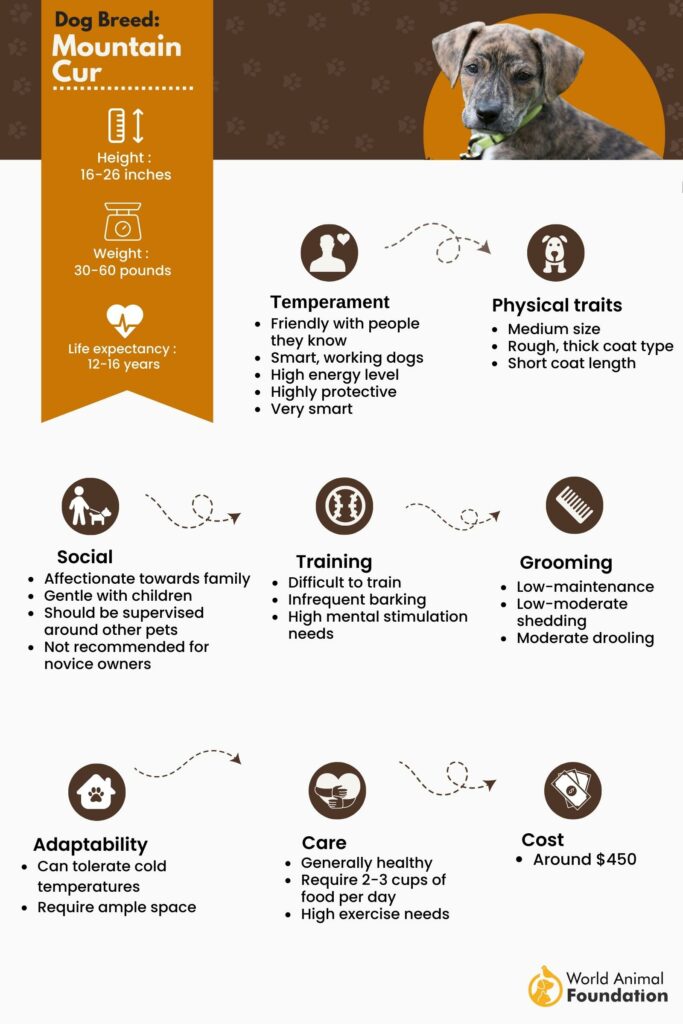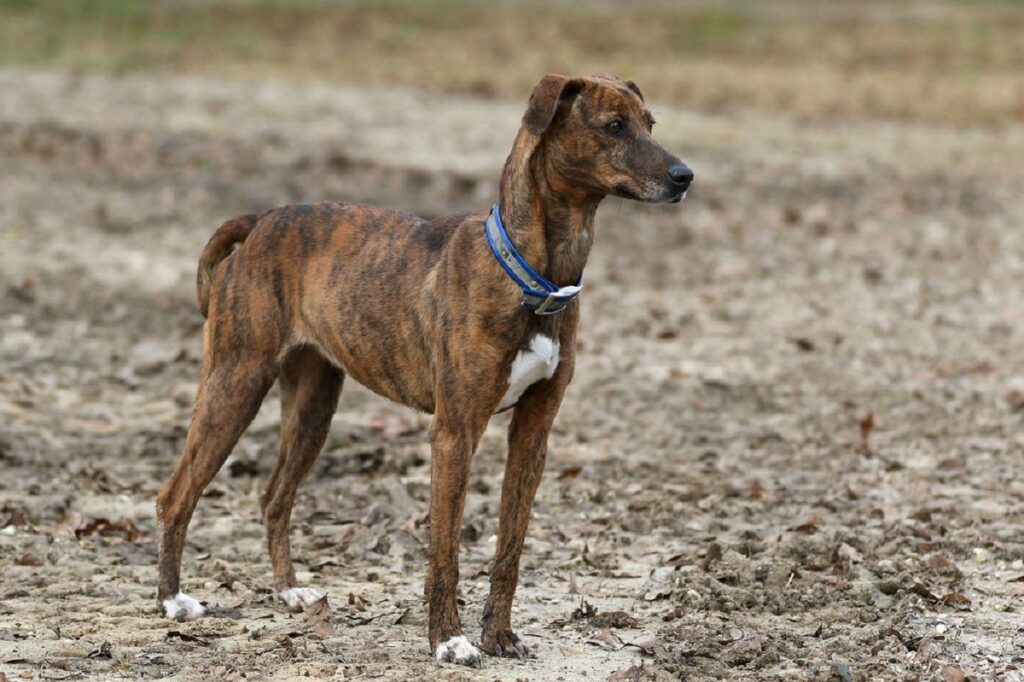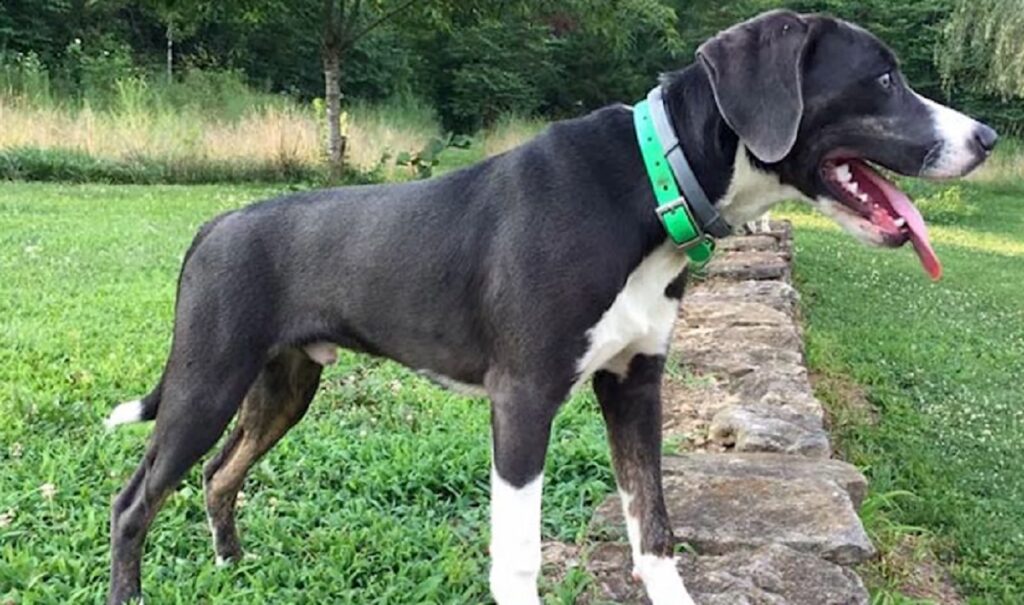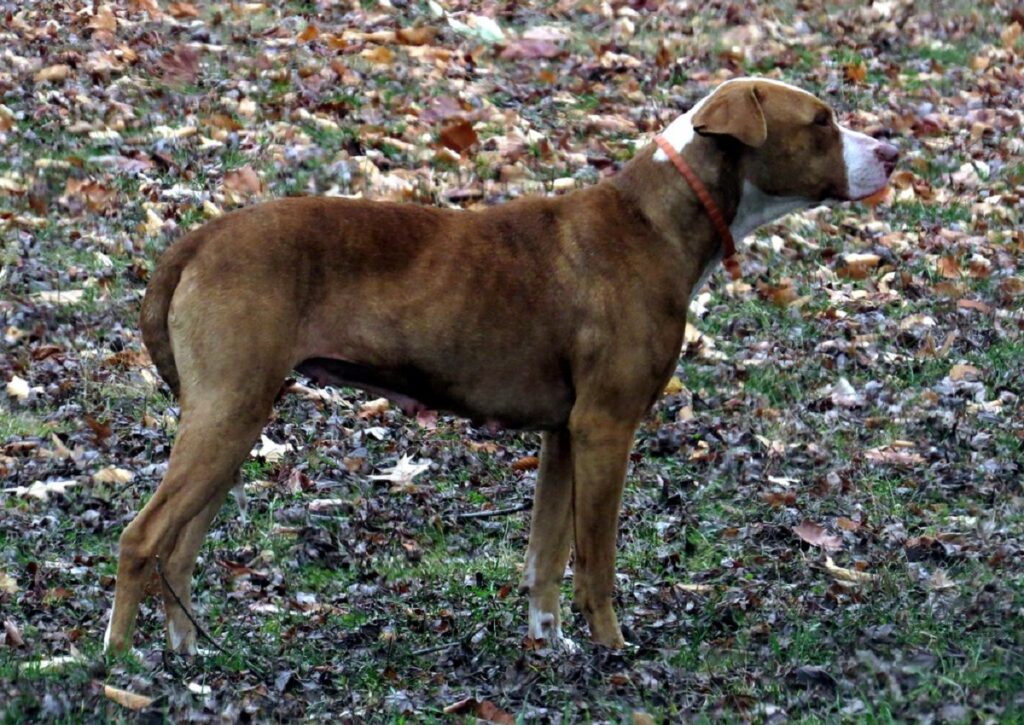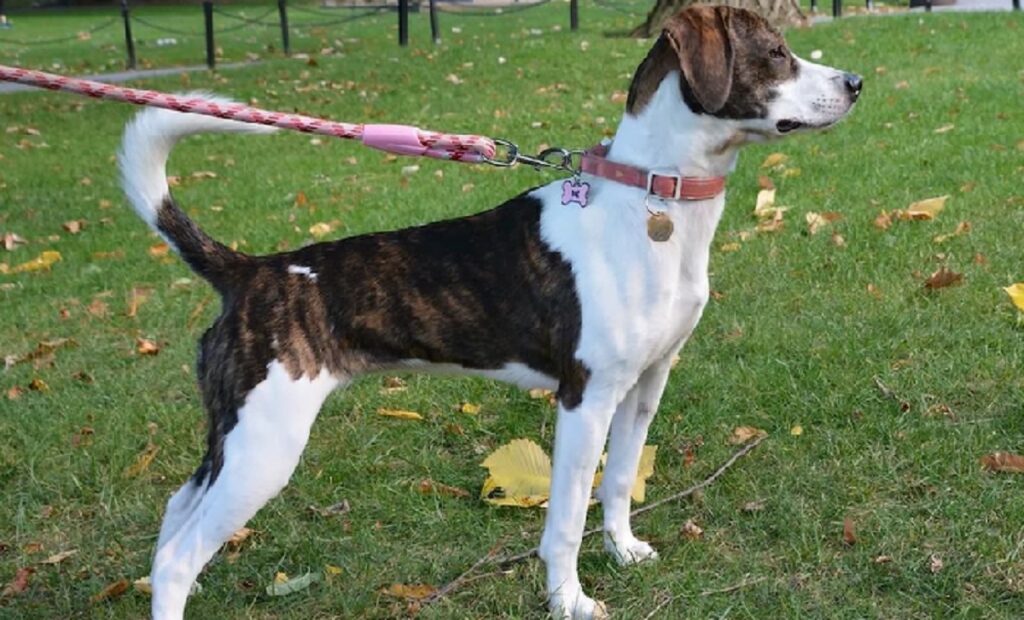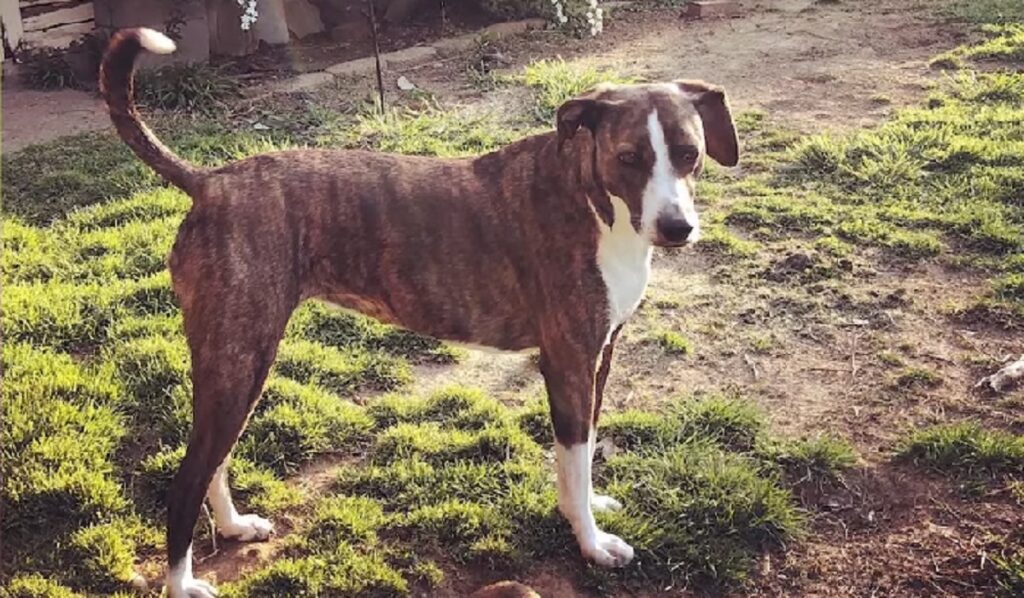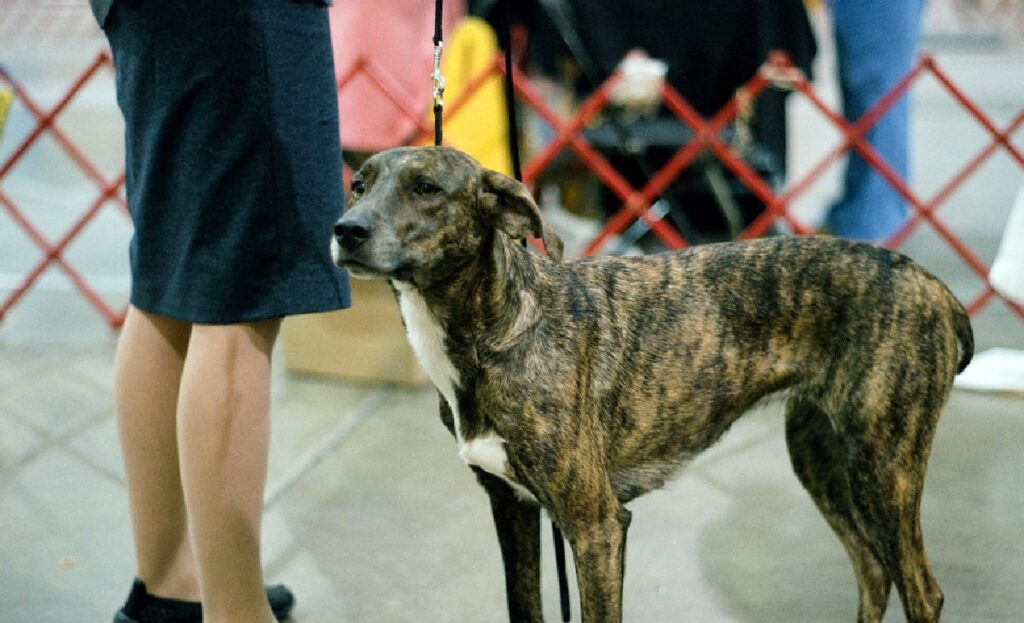Discover the rugged charm of the Mountain Cur, a versatile American breed prized for its hunting prowess and unwavering loyalty. This comprehensive guide from World Animal Foundation (Pet Yolo) delves into fascinating facts about the Mountain Cur’s history and unique characteristics. Learn essential health considerations, including common ailments and preventative care, plus expert advice on responsible ownership. Whether you’re a seasoned Cur owner or simply intrigued by this remarkable breed, uncover everything you need to know about providing a happy, healthy life for your Mountain Cur companion.
Looking for a dog that can bring even the big wild game down to its knees? If so, look no further and opt for mountain cur dog. This working dog was bred mainly to hunt all the big and small animals, including squirrels, badgers, raccoons, and even wild, bloodthirsty bears, making them the best sheepdog one may ever have.
However, it’s not only its extraordinary courage that makes the mountain cur our favorite working dog out there. Instead, we’re actually a fan of its versatile nature and intelligence.
Using his strengths, this dog will do everything, in his power, to please its humans. And when it comes to the security of its family, this dog won’t compromise at all.
And the best part is that these canines are neither too shy nor too stubborn, making them easier pets to handle. If you are wondering whether such a hunting dog should be kept in your house premises, or around your kids, keep reading the article.
Below, we’re going to debunk personality aspects of mountain curs, including their history, health, care & training, and temperament. Give it a read and figure out whether it’s a suitable pet for you and your family or not!
About the Breed
The mountain cur breed, pronounced as the mountain Kerr, as the name suggests, started its life history in the mountains of Tennessee and Kentucky. There, these dogs were originally bred to assist their owners to hunt and chase prey, guard their livestock against predators, and perform the duties of watchdogs.
Even after several centuries, the modern-day mountain curs have the same guard and hunting dogs instincts. That’s the very reason why these dogs are still used for the same cause in various regions.
At home, these dogs could be super quiet and calm however, when taken to the trailing and treeing fields, these dogs will suddenly transform into high-energy dogs. And the brightest part of this canine is its remarkable courage with which it can stand firmly against a tiger.
The words like fear, panic, nervous, confused, or shyness are nowhere in their dictionary – and that’s why they are considered one of the bravest dogs out there. As a family pet, these dogs will do well, but only if trained properly.
Remember that mountain cur is a very active breed, so adopt it only if you or your family members are outdoorsy – not lazy, couch potatoes. This dog is happiest when involved in outdoor activities – the more strenuous the task, the happier these dogs will be.
And do you know that besides being an excellent hunter and fighter, this dog also possesses extraordinary swimming skills?
Considering this, we can’t say that this dog breed is suitable for apartment living conditions since the limited space might make them anxious. Also, their exercise needs won’t be catered to properly in an apartment as they need a large yard to channel out their energies.
Although these dogs are extremely intelligent, their minds are also programmed to think and make decisions so training them for agility and obedience might take some time and ample effort.
Due to this reason, these dogs are recommended for experienced pet parents who know how to handle highly energetic and very active dogs.
Once trained properly, you’ll find this hunting dog as the most faithful, affectionate, and cheerful canine companion who is willing to sacrifice even his own life for you and your loved ones.
History of the Mountain Cur
No one knows the exact origin story of these dogs. However, it’s believed that their story begins when some Europeans migrated to the United States with some special terrier-type curs and bred them with the local curs.
As a result of this genetic combination, a new type of cur; the Indian cur, was developed, which was initially used as a tree and bay dog.
As time passed by, people began calling these dogs mountain curs for their abilities to hunt and tree prey even in the hilly, wooded areas. In addition to showing their strengths and capabilities in dry and swampy areas, these dogs also managed to survive in places where the living conditions were way too harsh.
One thing worth mentioning here is that in those times, all the cur dogs were considered the same breed, without any difference or sense of individuality. Even some highly distinctive other breeds like treeing Tennessee brindle, mountain view cur, and Stephan stock were counted in the same breed.
Thankfully, over time, breeders began categorizing these dogs into different breeds, considering their super distinctive traits. Sadly, a huge population of old-time mountain cur dogs was killed during world war I.
Therefore, some responsible breeders of those times, isolated the few remaining mountain curs and worked on increasing their count.
This way, as a result of the unlimited efforts of breeders, mountain curs had a comeback in history. Finally, this dog breed was officially recognized by the original mountain cur breeders association in the late 50s.
As more and more settlers came to America from Europe, along with their hunting terriers and hounds, they bred them with old-time mountain cur, which transformed these cur dogs into their present-day form.
These dogs were considered so valuable to the pioneers that one of the early settlers from the Appalachian mountains used to carry cur puppies in special protection baskets so they won’t get any harm.
In 1998, these dogs managed to get officially recognized by the American kennel club. The breed was recognized by the united kennel club the same year. In 2017, this breed was added to the AKC foundation stock service group, along with other cur breeds, including Catahoula Leopard Dog, blue lucy, and treeing Tennessee brindle.
Mountain Cur Facts
- A mountain cur can run at a swift pace of about 28mph whereas the average speed with which most dogs can run is 20mph.
- The average life expectancy of a mountain cur dog is 12-16 years. However, some mountain cur has also managed to live for 18 years.
- In a single litter, about three to eight cur puppies are born.
- Based on where you live, the cost of a mountain cur puppy might be somewhere between $500-$1000.
- Mountain curs are not hypoallergenic and may cause health problems for people with allergies.
- Considering the cost of food, grooming, toys, and health checkups, raising a mountain cur dog might cost you around $150 per month.
Mountain Cur Appearance
Mountain curs are muscular and medium-sized dogs with well-filled chests, broad heads, strong necks, and agile bodies. Their ears are droopy and high set, making them look even cuter.
Size
Like other dogs, the males of the mountain cur dog breed are bigger than the females. According to the breed standard, a male cur should be 18-26 inches tall, whereas the height of its female should be around 16-24 inches from the shoulder.
Typically, a mountain cur reaches its utmost height in twelve months.
Weight
Based on the size, the weight of male and female cur dogs may vary. Generally, both the male and female cur should weigh around 30-60 pounds.
Any cur who is under or above this weight limit should be considered either underweight or overweight. Likewise, the weight may vary based on other factors like diet, health, and activity levels.
Coat
This dog features coats in the form of short hair which feels smooth to the touch. However, these dogs feature double coats, which comprise a rough & thick top coat and a dense & smooth inner coat.
The coat sheds minimum to moderately but tends to shed more during the shedding season (twice a year). Some canines (especially those with rugged outercoats) also come with feathered tails.
Color
When it comes to coating color, you’d get to see a wide variety including red, yellow, brown, brindle, blue, and black coats. Besides, some mountain cur dogs also come with special tan and white markings on their faces and chests. The most interesting part is that these dogs produce multi-colored puppies in a single litter.
Mountain Cur Temperament and Personality
Most of the time, mountain cur dogs are quiet and affectionate, but you should not forget why this breed was developed in the first place; to hunt, chase, and tree the small game. Due to this, mountain cur dogs have a high prey drive and insane tendencies to chase small pets.
Therefore, keeping a mountain cur canine in a house with other pets, especially cats, might cause some issues. On the other hand, these dogs go well with others dogs in your family, if trained properly.
Some experts have also confirmed that these dogs can be taught which animal they should chase and which one is part of their family.
For this purpose, it’s important to raise them along with those household pets and start training them from a very young age.
Likewise, these dogs adore children and seniors of your family and can be highly protective of them. They never allow strangers to intrude into their territory and can come out to be fearless guard dogs.
For this reason, a mountain cur can be trusted with kids and elders but still, it’s better to supervise the whole interaction thoroughly. Remember that mountain cur dog thrives on nonstop action and dog sports to vent out their pent-up energy. They are not one of those pets which can be left alone.
If left alone, even for a short span, they might develop incurable separation anxiety. Therefore, buy or adopt this dog only if you are willing to give him proper time, attention, and long daily walks.
Similarly, they prefer living in a house with a wide yard where they can play and get sufficient physical and mental stimulation. Compared to the indoors, mountain cur canines love spending time in the great outdoors.
The good thing here is that these dogs are not excessive barkers but still, they make highly competitive watchdogs. Their intimidatingly small bodies can emit a super loud bark which will be enough to grab you out of your dreams, warning about the prospective security threat.
However, we can’t say that mountain cur dogs stay cold or wary of strangers all the time. They are highly social, and once they mark a new face as their friend, they will be warm and soft towards him too.
Mountain Cur Health and Care
Speaking of the health of mountain cur canines, these purebred dogs are generally healthy. They rarely develop severe health issues, and the common health conditions you’d get to find in them are as follows;
Ear Infections
Almost all dogs having floppy ears are prone to catch ear infections if their ears are not cleaned regularly. When dust, dirt, and debris keep on accumulating in the auditory canal, it turns into the perfect habitat for yeast and infection-causing bacteria. Resultantly, your dog might suffer from painful ear infections.
To prevent this, make sure to clean the ears regularly and check for infection symptoms. These symptoms include foul odor, head shaking, dark discharge, scratching, inflammation, and pain in the auditory region.
Skin Infections
Despite having a double coat and a thick layer of short hair, mountain cur dogs are prone to catching skin infections. These skin irritations might be caused by overbathing or not letting the mountain cur’s skin be exposed to fresh air.
Thus, to prevent these skin irritations and dryness, avoid bathing your canine too often. Remember that a mountain cur should bathe only when its coat gets highly filthy. Also, use only specially formulated shampoos and conditioners.
Ticks/ Parasites
Ticks and other blood-drinking parasites may stick to your canine’s skin and suck its blood and body fluid until it gets sick. If not treated on time, these parasites may cause various other diseases, too, including Lyme disease.
Therefore, on suspecting ticks or parasite infestation in your puppy’s coat, take them to a vet immediately. You can also remove ticks using specialized, tick-removing tools.
Speaking of their grooming requirements, their minimal shedding coat needs more frequent brushing only during the shedding season (in spring and fall). However, on normal days, brushing their coats once a week to remove dead and loose hair, is enough.
For better results, use a soft-bristled and sleek brush so it can not only dissipate the knots but also give your dog a relaxing massage and distribute its natural body oils thoroughly.
Similarly, to maintain utmost hygiene and prevent bacteria buildup, consider mountain cur’s teeth brushing and regular nail trimming an inevitable part of your daily routines.
Mountain Cur Training
Since the mountain cur is a guard dog, he considers you more of its pack members than its family members. Due to this very reason, he won’t hesitate to make decisions on your behalf. That’s why the very first thing you should start working on is your dog’s obedience.
From their very first day, make them understand who’s the boss. For this, you need to pay close attention to the smallest things. For example, when going outside on daily walks with your mountain cur, make them learn to walk on the leash and heel beside or behind you.
Doing so will give your dog the impression that the person who’s holding the leash is the boss, and it has to follow his commands in every matter. Remember that as an owner of the mountain cur, you need to be consistent, powerful, patient, and dominant. Otherwise, he won’t take you seriously.
Always use positive reinforcement methods and offers rewards in the form of treats and toys, to encourage his fast learning progress. However, you shouldn’t feed him treats more than 10% of his entire’s daily diet.
To make the dog tolerant towards new faces, indulge him in early socialization so it could get familiar with certain faces, sounds, smells, handling, and environments.
Conclusion
Mountain cur dogs are naturally curious, and they can get distracted easily by squirrels and smells. Therefore, while taking them out for walks, make sure they remain on the leash. On the other hand, fence your yard completely so these dogs won’t wander off.
Since mountain cur dogs are in high demand, they are quite difficult to be found in rescue groups and shelter homes, but you still may check for the availability to save hundreds of dollars.
The Mountain Cur, a versatile and loyal breed, thrives as a working dog and devoted companion. Prioritizing their well-being requires understanding their energetic nature and providing ample exercise and mental stimulation. Regular veterinary care, a balanced diet, and attentive grooming are crucial for their overall health and longevity. While generally robust, being aware of breed-specific health concerns like hip dysplasia allows for early detection and proactive management. With the right care and training, a Mountain Cur adds an enriching and active presence to any suitable home.

